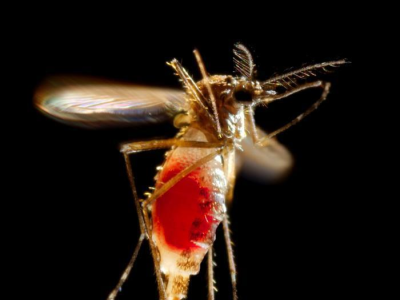Jul 13, 2011 (CIDRAP News) – Health officials investigating a cluster of Escherichia coli O104:H4 infections at a German school found a large number of asymptomatic infections in students and staff, a development that could pose new threats, the European Centre for Disease Control and Prevention (ECDC) said yesterday.
Four infections, including three involving hemolytic uremic syndrome (HUS), were detected in students at the school in Kreis Praderborn, located in western Germany's North Rhine-Westphalia state, according to the ECDC. However, preliminary screening found that 22 of 30 children had asymptomatic infections, which the ECDC in its latest risk assessment characterized as a significant level.
The illnesses cropped up in late June, and health officials temporarily closed the school on Jun 28 to prevent further spread of the illness, according to earlier media reports in which experts blamed the outbreak on poor hygiene practices rather than contaminated sprouts.
Asymptomatic E coli O104:H4 infections were also found in three of the school's kitchen workers, four workers in four different childcare centers in the area, and three staff members of a catering company that supplied the school. The ECDC said further investigation of the cluster is ongoing.
The substantial number of asymptomatic infections raises fresh concerns about the risk of new foodborne outbreaks, especially when food handlers have been exposed to E coli O104:H4, according to the report.
"Considering the large number of summer festivals and mass gatherings in the EU, with sometimes inadequate food hygiene standards, targeted public health messages for such events could be of value to prevent further spread," the ECDC warned. It also urged public health departments to emphasize the importance of proper hand-washing in their public communications.
The ECDC said the possibility that the strain has a longer incubation may mean that a low infectious dose is involved, which might increase the likelihood of person-to-person spread or foodborne transmission from infected people. Though person-to-person spread of the disease has occurred in the outbreak, it doesn't seem to be playing an important role. So far person-to-person spread has not sparked outbreaks at daycare centers, schools, or nursing homes.
New findings about the asymptomatic infections, along with a lower but continuing level of new cases and clusters, suggest that Europe's E coli outbreak is in a transition phase, from a sprout-focused event to one that is driven by contaminated seeds that may still be on the market or in households, along with new foodborne transmission vehicles and person-to-person transmission, the ECDC said.
Michael T. Osterholm, PhD, MPH, director of the University of Minnesota's Center for Infectious Disease Research and Policy (CIDRAP), the publisher of CIDRAP News, said the ongoing limited transmission of the outbreak strain that Germany is experiencing fits the typical profile of an enterohemorrhagic E coli (EHEC) outbreak's several-week shutdown period. He also noted that suspicions that a low infectious dose is involved builds the case that the outbreak strain is behaving similar to other EHEC strains. "The epidemiology shouldn't be any different," he added.
The significant number of asymptomatic infections that German investigators found in the school cluster might signal that there are a lot of missed E coli O104:H4 infections, which would bring down the rate of HUS to a level that more closely resembles other EHEC outbreaks, Osterholm said.
"I believe the HUS cases are the real tip of the iceberg," Osterholm said.
So far the ECDC has received 3,848 reports of E coli O104:H4 infections, including 763 with HUS and 44 deaths, according to an outbreak update today. The total includes nine new cases from Germany, including one with HUS. So far no new deaths have been reported.
See also:
Jul 12 ECDC risk assessment
Jul 13 ECDC outbreak update
















